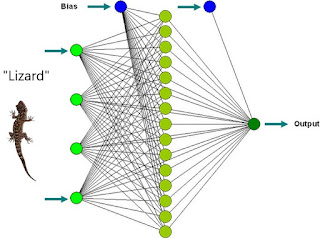Machine Learning In Brief.
| Image by Manfred Steger from Pixabay |
Machine Learning Problems Classification.
Hello everyone!!!
Welcome to this new article. Hope you are safe and doing well. Here we are going to discuss about brief introduction about machine learning with respect to machine learning problems classification. So let's begin the explanation.
Machine Learning is subset of AI which can be termed as a science of getting computers to learn without being explicitly programmed.
Facebook recognizes your friends in pictures, computer
distinguishes spam mails from non-spam mails are some work thanks to ML.
Above are 2 definitions given by Tom Mitchell who is a professor at Carnegie Mellon University. As per the first definition presented by Tom Mitchell, ML algorithms enables a computer to learn through the experience just like a human faces new problems using the experience gathered in the past.
Although the first definition is simple, the second definition may be little bit confusing. Now I am going to describe the second definition using an example as follows.
When you receive mails you mark and classify them as spams and non-spams. The computer examines you classifying them as spams and non-spams. This is said to be that computer program learn from experience 'E'. The task 'T' that computer program should perform is classifying the mails as spams and non-spams. The related measurement 'M' can be stated as the percentage accuracy of classifying a received mail as a spam or a non-spam.
Now Let's go for a classification of this huge topic Machine Learning. Basically machine learning problems have 2 main criteria as Supervised
learning and Unsupervised learning.
Thereafter Supervised learning also can be classified in to 2 categories namely Regression problem and Classification problem.
Thereafter Supervised learning also can be classified in to 2 categories namely Regression problem and Classification problem.
In Supervised learning along with the data set, the right output is also given by us which means our data set is labeled. Therefore, we have an idea about relationship between input and output.
This will be more clear once you refer the below example. Let's consider a model which classify various reptile types based on images of reptiles. As an example during training we pass image of lizard along with a label named "lizard". Consequently in Supervised Learning, the model learns to map output to a similar kind of new input based on what it learned from labeled training.
In Classification problem which comes as a category of Supervised learning, the output takes a discrete value (ex: 1 or 0). As an example classifying the received mails as spam and non-spam (ex: discrete value 1 for spam, 0 for non spam).
Regression problem which also belongs to Supervised learning can be explained using an example as this. In a Regression problem goal is to predict real-valued output.
There is a graph that shows the variation of house prices upon the size of the house(graph is plotted based on known and right values). Using this graph we can find the price of a house for a given new house size. Price as a function of size is a continuous (real valued) output. So this is a Regression problem.
This will be more clear once you refer the below example. Let's consider a model which classify various reptile types based on images of reptiles. As an example during training we pass image of lizard along with a label named "lizard". Consequently in Supervised Learning, the model learns to map output to a similar kind of new input based on what it learned from labeled training.
In Classification problem which comes as a category of Supervised learning, the output takes a discrete value (ex: 1 or 0). As an example classifying the received mails as spam and non-spam (ex: discrete value 1 for spam, 0 for non spam).
Regression problem which also belongs to Supervised learning can be explained using an example as this. In a Regression problem goal is to predict real-valued output.
There is a graph that shows the variation of house prices upon the size of the house(graph is plotted based on known and right values). Using this graph we can find the price of a house for a given new house size. Price as a function of size is a continuous (real valued) output. So this is a Regression problem.
Other main category of ML is Unsupervised learning which is also known as Clustering because of its features. In Supervised learning we have idea about what our output is going to be. But in Unsupervised learning there is no idea what our results should look like.
Unsupervised learning is used in applications such as identifying market segments, social network analysis, astronomical data analysis etc.
Example application of Unsupervised learning can be given as follows. There are collected data about customers. Our objective is to separate the customers in to various market segments. In such a situation customers can be segmented in to separate market segments using Unsupervised learning algorithms.







Comments
Post a Comment